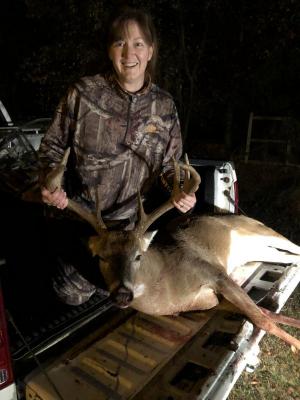As you might guess, fishing has been curtailed by the weather. There’s something about 10- to 12-foot seas combined with 30- to 40-knot northeast winds and 40-degree air temperatures that seems to discourage most anglers from going out on the ocean or bay. However, on those rare days when the seas are calm, good numbers of fish have been caught.
Sea bass continue to take clam and squid baits at the Del-Jersey-Land Reef and other ocean structure in 100 to 130 feet of water. Boat limits of 15 fish per angler were common on charter, head and private boats that were able to make the run to this area.
Even farther offshore, swordfish were caught by deep-dropping during the daytime in 1,800 feet of water. Along with the swords, bigeye and true albacore tuna were taken. Dolphin have been hanging around the buoys marking lobster pots at the edge of the 100-Fathom Line.
Closer to shore, tog are the target of boats toggling off the Outer Wall and the Ice Breakers. We have even had reports of tog caught at the Inner Wall. The number of fish caught has been high while the number of those tog over the 16-inch minimum size has been low. Sand fleas and green crabs remain the top baits.
The same story holds true for Indian River Inlet. Lots of short tog and a few keepers on sand fleas and green crab.
At times, the Inlet has seen rockfish caught on white bucktails and white plastic worms. This usually occurs during incoming water, but may only last for an hour or two. The vast majority of the rockfish are well below the 28-inch minimum size, but the occasional 30-incher has been taken. Live eels fished from the jetties at night stand a better chance of finding a larger rockfish.
The main body of the migrating coastal stock of striped bass is still well to our north. Boats out of Belmar, N.J., have been finding 30- and 40-pounders when the weather allows them to sail.
On Nov. 14, Tyler Lang was fishing on Captain Vinny Vetere’s Katfish Charters out of Staten Island when he caught a 67.55-pound striped bass on a gold-and-white Tournament Grade Tackle rattle spoon. The spoon was designed by Capt. Vinny to imitate a summer flounder and had caught a 60-pound striper the week before. All we can do is hope those fish come within range of Delaware anglers.
Striped bass options
The Advisory Council on Tidal Finfisheries met Nov. 20 in the DNREC Auditorium in Dover to discuss, among other topics, the striped bass management options for 2020.
John Clark, fisheries administrator, presented the three options that will be presented to the Atlantic States Marine Fisheries Commission for their approval then brought back to Delaware to begin the regulatory process.
Option 1 would set a slot limit in the state of 28 to 35 inches with a one-fish bag limit and close the summer season in Delaware Bay for recreational fishermen. A decrease of 25 percent. It would decrease the commercial catch from 145,085 to 118,970 pounds. A decrease of 18 percent.
Option 2 would set a 28- to 38-inch slot limit and one-fish bag limit in the ocean and a July 1 to Aug. 31 20- to 25-inch slot in the Delaware Bay and River, and a one-fish bag limit for recreational fishermen. A decrease of 18 percent. Commercial fishermen would see their quota drop from 145,085 to 118,970 pounds. A decrease of 18 percent.
Option 3 would set a one-fish bag limit for recreational fishermen with a 28- to 35-inch slot and a summer season in the Delaware Bay and River from July 1 to Aug. 31 with a 20 to 25-inch slot limit and one-fish bag limit. A reduction of 20 percent. Commercial fishermen would see a 2 percent reduction from 145,084 to 142,473 pounds.
There was considerable discussion between members of the council and Mr. Clark as well as a few members of the audience. In the end, Bernie Pankowski made the motion and Wes Townsend seconded it that the council would go on record as preferring Option 3. The vote was four in favor, one opposed and one abstaining. This vote has no binding power. It simply gives Mr. Clark guidance when he presents the options to the ASMFC.
Option 3 is the most logical choice since the latest data shows recreational fishermen are responsible for 90 percent of the striped bass mortality. Most of this mortality is due to catch and release where at least 10 percent of the released fish die.
Once the ASMFC approves the options, Delaware’s long regulatory process will begin, and somewhere along the line a public hearing will be held. We will keep you informed.

























































